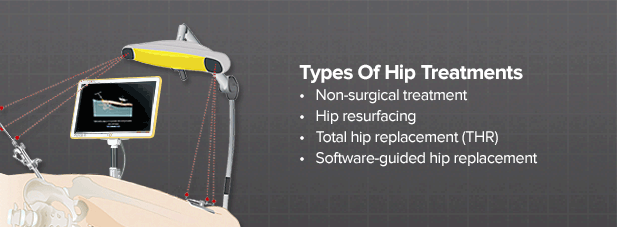
Fortunately, there are many treatment options available for hip disorders and injuries, including hip surgery, hip replacement and hip exercises. Depending on the severity of your condition and pain, your doctor may suggest that you undergo either non-surgical or surgical treatment.
In terms of non-surgical treatment, your doctor may recommend rest, gentle and regular hip exercise, anti-inflammatory medications, adequate sleep, weight loss (if applicable), or perhaps an assistive device such as a cane. However, if these treatments fail to improve the symptoms or the damage is more advanced, your doctor may inform you that a total hip replacement is likely the best option for reducing pain and reclaiming former activity level and quality of life. Although this may result in post-operative hip pain, the long-term benefits normally outweigh temporary discomfort. To learn more about alternative hip treatment options, please refer to the Explore Hip Treatments» section.
Each year, almost 1.4 million hip joint replacement procedures take place worldwide.1 In order to support surgeons during these procedures, advanced orthopedic technologies, such as software-guided tools, are being continuously developed and improved upon.
Explore both non-surgical and surgical options for your hip»